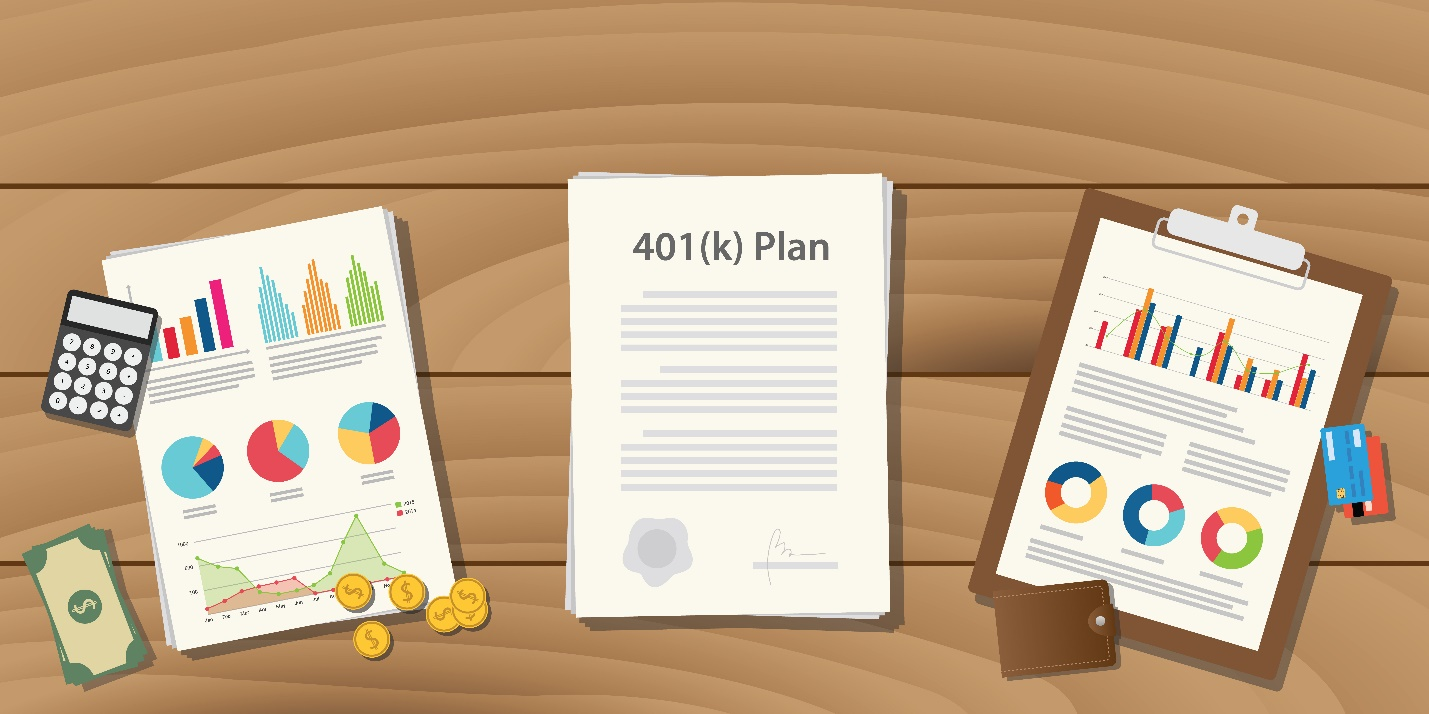The dream of a comfortable retirement is one that motivates many an American worker. But like many other things in life, the definition of comfortable retirement is one that varies from person to person. For some, retirement means sitting on the couch watching TV and drinking beer. For others, it means living an active life full of sports and travel. Each of those lifestyles brings with it the need for different levels of financing.
Most Americans today rely on a workplace 401(k) program as their primary retirement savings vehicle. With matching contributions from employers, workers can build up large retirement nest eggs with consistent saving and smart investment. But many investors struggle with figuring out just how much money they should have in their 401(k) accounts at various ages.
As with many other investment finance topics, there’s no hard and fast rule when it comes to figuring out how much money you should have in your 401(k), but there are some general principles. How much you decide to save in your 401(k) account is dependent on your ability to save and your expectations for your spending in retirement.
While you may encounter sayings such as “save one year of salary for every five years of age,” that’s generally a goal that’s only achievable by the time you retire. Younger workers run the risk of discouragement if they read things like that, and may decide that they’ll never be able to save enough money to retire.
Much of what will be discussed in this article is premised as though a 401(k) account is your only source of retirement savings. That may be the case for many American workers, although it’s certainly not recommended. In order to keep your retirement savings diversified and to provide yourself with the most income you can in retirement, you need to have assets invested across multiple investment vehicles, from 401(k)s to IRAs to bank accounts. If you feel like you have too much money in a 401(k), you can even do a gold 401(k) rollover, in which you transfer funds tax-free from your 401(k) into a gold IRA so that you can invest in the safety and stability of gold.
And while Social Security is in dire financial shape and shouldn’t be relied on for a primary source of retirement savings, the system still exists and should be paying out benefits in the future. That way if your retirement savings fall short or you experience unexpected investment losses, you should have additional funds to fall back on.
How Much Money Should I Save for Retirement?
Retirement planning takes actual planning, it isn’t just something that happens by chance. And part of that planning process is figuring out how much money you’re going to need to save for retirement. The exact sum you’ll need is largely dependent on the lifestyle you live now and the lifestyle you expect to live in retirement.
A general rule of thumb is that you’ll need approximately 80% of your current salary to support yourself in retirement. While some expenses such as mortgages will eventually go away, rising healthcare costs and other cost of living increases will take their place.
Another rule of thumb is that you should be able to live on 4% of the total sum you’ve saved up for retirement. So if you expect that you’ll need $30,000 a year to live on, you’ll need to save up a nest egg of $750,000.
Again, these are just rules of thumb and there’s nothing hard and fast about them. But if you’re going to prepare for retirement then you need to start creating a budget and figuring out how much money you’re going to spend in retirement. Once you’ve established your expectations, then you can start figuring out how much money to save for retirement.
Discussing your plans with a financial adviser can be highly beneficial too, as they have seen dozens or hundreds of other people in the exact same financial situation as you. They’ll be able to help you budget for retirement, plan for expected and unexpected expenses, and help you assess how much money you might be able to expect from Social Security.
In Your 20s
It can be incredibly difficult for people in their 20s to save for retirement. The thought of saving money for an event 40-50 years in the future just sounds crazy to someone who’s just entering the job market. But these years can be some of the most important in getting together the discipline to save and putting the tools together to enable you to save and invest for retirement.
In your early 20s you’re just getting out of college and wondering where to work or whether to go to grad school. You’re likely carrying some amount of student debt, plus possibly some credit card debt. The priority here should be to get out of debt as soon as possible and build up a strong credit history.
Make sure that you make regular payments on any student loans, credit cards, or auto loans that you may have. If you work at a job that offers employer matching contributions, take advantage of that free money because it will stand you in good stead in the future.
By the time you end your 20s, you’ll want to shoot for having at least half your annual salary saved up in your 401(k). But don’t worry if you don’t, because you’ll still have plenty of time to save, and your earning power should only go up from here.
In Your 30s
Once you hit your 30s you’re probably thinking about marriage and children. Both of those will put a strain on your finances and hamper your ability to save. But it doesn’t make saving and investment impossible.
By now your debts should be largely paid off or on track to be paid off, with the exception of a mortgage. You’ll also be making more money once you hit your 30s, so you’ll be able to devote more of your salary to saving and investment. Here’s where you can prioritize investment, by making sure that a significant portion of every raise you get is earmarked for retirement.
It may not be realistic at this point to max out your 401(k) contributions, which for 2019 is $19,000, but you’ll want to try to maximize your savings if at all possible. The more you can save in this decade, the better off you’ll be when it comes time to buying a house, paying for college, saving for retirement, etc.
A good rule of thumb here is to have your annual salary saved in your 401(k) by the time you hit 35. Don’t worry if you can’t reach that, as you still have time, but definitely try to have that amount saved by the time you end your 30s.
In Your 40s
If you haven’t started planning for retirement by your 40s, you’re a little behind the curve. It’s not too late to start saving for retirement, but you’ll definitely have to catch up. At this point you may find yourself having to make tough financial decisions, such as whether you’ll be able to start saving for your children’s college tuition.
The one thing you’ll have going for you is that your 40s are generally the decade at which you’ll reach your peak earnings. That will make it easier for you to save for retirement, while still being able to enjoy family vacations and other pleasures of life. By the time you’re 40 you should ideally have two times your salary saved in your 401(k), and by the time you’re 45 you should have three times your salary saved.
In Your 50s
Once you hit 50 you’re able to bump up your retirement contributions. 401(k) contribution limits increase from $19,000 to $25,000, and IRA contribution limits increase from $6,000 to $7,000. That means a combined $70,000 in extra contributions that you can make throughout your 50s.
By this point retirement is no longer looking so far off. You’ll have a better idea of what types of expenses to expect, what your lifestyle will look like, and what your retirement plans are. That can help you plan your retirement in much greater detail.
You may also want to start thinking about downsizing, or at least think about the possibility of downsizing once your children are grown and move out of the house. Here’s where paying off mortgages and minimizing your cost of living can pay dividends.
Your 50s are also a time of maximizing passive income streams such as investment income. By the time you reach age 50 you should ideally have four to five times your salary saved in your 401(k), and by age 55 you should have six times your salary saved. From here on out you’re going to want to see exponential growth in your investment assets in order to retire.
In Your 60s
Well, you’ve done it. You’ve navigated the rat race of the work world and retirement is just around the corner. Most people are itching to retire by the time they reach their 60s, and hopefully they’re financially prepared for it too. For those who haven’t prepared financially, they’ll have to keep working as long as they can before they’re forced out of the workplace. By the time you reach age 60 you’ll want to have 8-9 times your salary saved in your 401(k), while by age 65 you’ll want to have 10-11 times your salary saved.
As you reach your 60s, you’ll also face decisions about when to start collecting Social Security. While you can start collecting at age 65, you only get your full benefits when you reach age 70. And for every year after age 70 that you delay your benefits, you’ll gain additional benefits that will last the rest of your lifetime.
Here’s where having a financial adviser can come in handy, since you’ll likely face some tough financial decisions. Many of those decisions will also have tax consequences, so it’s worth consulting with a tax adviser too so that your retirement savings aren’t eroded away by taxation.
This is also the time to start thinking about what your retirement asset portfolio will look like. You’ll want to make sure that you’re properly diversified so that you’re not overly exposed to a particular asset class such as stocks. This is where a gold 401(k) rollover can come in really handy, as it protects your assets during perhaps the most critical time of your life.
Whether you hit the various financial targets for your 20s, 30s, 40s, etc. or not, the key is to make gradual progress in increasing the amount of money you save in your 401(k). Your 401(k) is a retirement vehicle, not a piggy bank for emergency expenses, fancy vacations, etc. If you exercise discipline and invest soundly, the assets you’ve saved in your 401(k) can provide for you for decades after retirement. Call the experts at Goldco today to find out more about how you can put your 401(k) to work for you in securing a safe and comfortable retirement.
This article was originally posted on Goldco.




